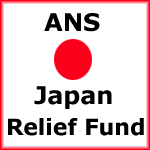By Peter Caracappa
 I teach students of engineering. Many of them (although certainly not all) prefer logarithms to literature and algebra to anthropology. No doubt they get a fair share of that in my classes, but I try to include a bit of history whenever I can.
I teach students of engineering. Many of them (although certainly not all) prefer logarithms to literature and algebra to anthropology. No doubt they get a fair share of that in my classes, but I try to include a bit of history whenever I can.
 My students all know that matter is made up of atoms. They know that those atoms are made up of electrons that are orbiting around a central nucleus, which itself is a mixture of protons and neutrons. “When did you first learn these concepts—the nucleus, protons, and neutrons?” I like to ask. For many, it was elementary school, or possibly early in middle school. Regardless, it is clearly something that we teach to children, and it is perceived as an “obvious” fact of nature.
My students all know that matter is made up of atoms. They know that those atoms are made up of electrons that are orbiting around a central nucleus, which itself is a mixture of protons and neutrons. “When did you first learn these concepts—the nucleus, protons, and neutrons?” I like to ask. For many, it was elementary school, or possibly early in middle school. Regardless, it is clearly something that we teach to children, and it is perceived as an “obvious” fact of nature.
Then I point out that 100 hundred years ago, these theories simply did not exist that today we consider so fundamental to our understanding of the nature of matter. One hundred years ago, there were airplanes, automobiles, and electric lights, but no such concept as the nucleus.
In fact, it will be 100 hundred years ago this May that Ernest Rutherford published a paper in Philosophical Magazine positing the idea that atoms consist of a dense nucleus surrounded by electrons (Rutherford E. [1911]. “The Scattering of α and β Particles by Matter and the Structure of the Atom”. Philosophical Magazine, Series 6 21: 669-688). I think this is a centennial worth celebrating!
Okay, so maybe some will peg the 100th anniversary to the gold foil experiments performed by Rutherford’s students Geiger and Marsden in 1909 . So be it—there are plenty more anniversaries to come: it wasn’t until 1913 that Bohr put forth his theory of orbiting electrons, and it was all the way to 1932 before Chadwick demonstrated the existence of that last puzzle piece that made the entire field of nuclear engineering possible, the neutron (although a neutral nuclear particle was postulated by Rutherford himself in 1920).
In today’s world, the pace of technological innovation should come as a surprise to no one. And yet, it is easy to forget just how “young” the fundamental knowledge is that we rely on as the building blocks of our industry. If nothing else, it should give us an appreciation for the potential for the discoveries made today, and just how quickly they could change everything.
Peter Caracappa is a clinical assistant professor and radiation safety officer at Rensselaer Polytechnic Institute, in New York State. He was a founding executive committee member of the Young Members Group and currently serves as its chair. He is a contributor to the ANS Nuclear Cafe.
























